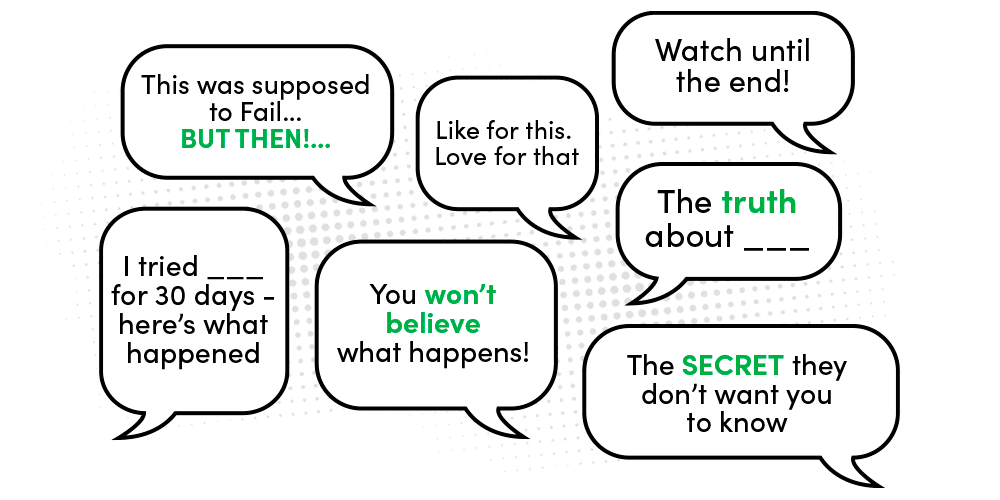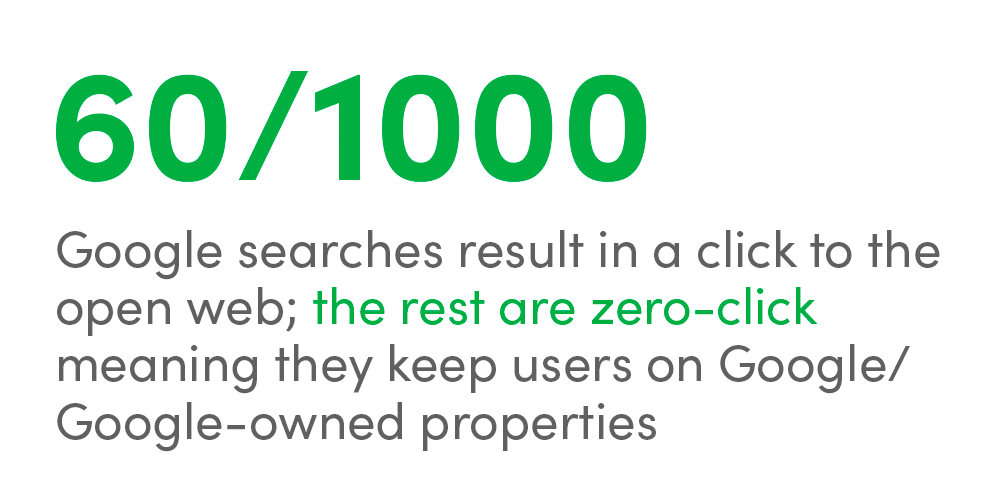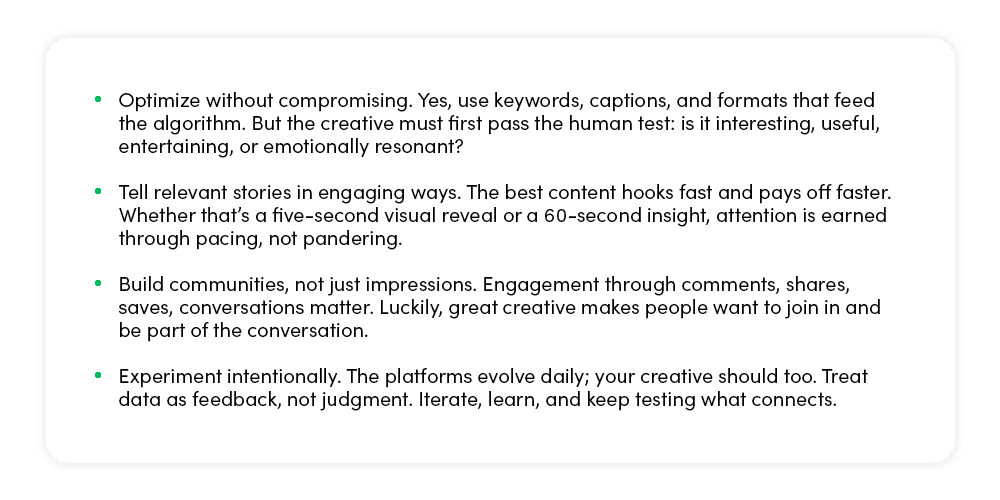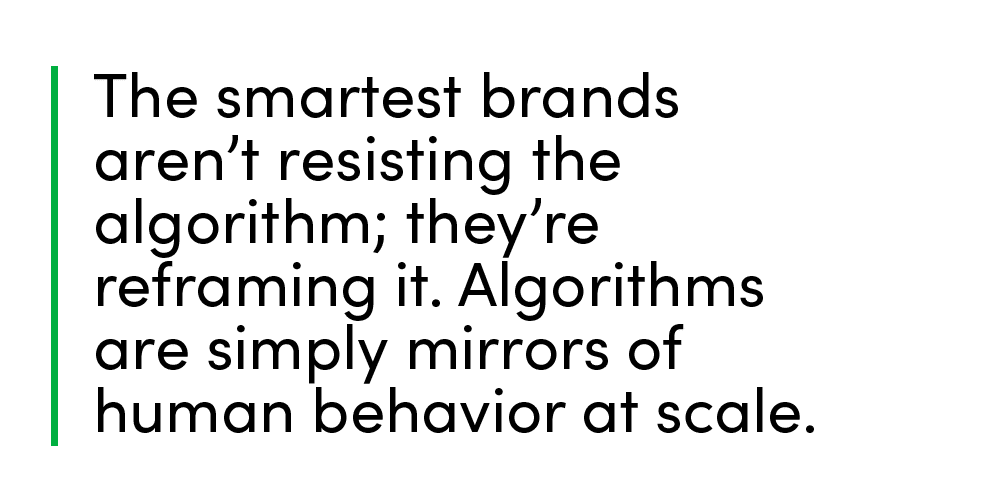Think of it like this, you hear a new song on the radio. It’s a breath of fresh air. Everybody loves it. It’s a top ten hit! So, another band puts out a similar song, and it’s pretty great too. Soon, every single song you hear sounds exactly the same, until you absolutely hate them all. Eventually, someone puts out a new song that’s completely different and a breath of fresh air. And the cycle continues.
This is the algorithm.
Every time you pause during a scroll or click a link, the algorithm curator is at work. “More than half of what we see is guided by machine decisions,” according to SEO Sandwich. And when something works, you can tell.

We’ve all probably clicked on these at least once in the past, and now we roll our eyes and scroll past them. Every algorithm trick works, until it suddenly doesn’t.
The algorithm rewards what keeps people engaged. The trick is to find the tipping point. How do you create something that you know people will like, without creating something they are sick of?
Here’s what Timothy Sauer PhD, research and consumer strategist has to say:
“Chasing trends or bending creative to please an algorithm rarely works in the long run. Audiences can sense it. Just look at the backlash against lazy AI-generated posts or manufactured hot takes. Did every marketer need to give their two cents on the Cracker Barrel logo? People tune out when it feels forced. What algorithms really reward is consistency, clarity, and content that keeps people engaged. And the best way to do that is by grounding creative in authenticity and sincerity, driven by what the audience actually values.”
But as marketers, we can’t ignore the fact that we want as many eyes, and clicks, as possible, and the internet is where the people are. The “typical” internet user spends almost 2½ hours per day on social media.
Even “light” TikTok users are drifting toward 70+ minutes/day, with power users exceeding 4 hours/day; a pattern tied to the app’s hyper-personalized ranking and endless scroll design.
And we can’t ignore the fact that Google and AI have a stranglehold on what we see.

AI Overviews appear first in search results; the first organic link loses an average of 34.5% of clicks.
One way to fight back is in court, like Brazil.
Brazil’s biggest media groups are taking a stand against Google and demanding more regulation. The News Media Alliance president issued strong criticism of Google’s AI features: “Links were the last redeeming quality of search that gave publishers traffic and revenue. Now, Google takes content by force and uses it with no economic return. That’s the definition of theft.” News organizations say Google’s AI tools give answers directly instead of sending readers to their sites, cutting off a key source of traffic and revenue. In regions like the European Union, Google is already classified as a “gatekeeper” for its capacity to influence information access.
In the United States, the Department of Justice has proposed Google sell its advertising platforms AdX and DFP after a federal judge concluded the company illegally dominates two online advertising markets. Meanwhile, Google defends its AI features as discovery tools that boost engagement, citing 1.5 billion monthly users and increased searches, yet it has not revealed criteria used for including links in AI-generated responses, creating uncertainty for content creators attempting to optimize for the new system.
But if we can’t beat ‘em (for now) we join ‘em. But, we do it our way, with relevance and authenticity.
According to Sauer:
“As a researcher and strategist, I think it’s a disservice to the consumer if we don’t start and end with their needs. Our work begins by immersing ourselves with a brand, understanding its story, and speaking its language. But ultimately, it comes down to what resonates with the customer. Which value props connect? Which creative directions feel authentic? Those answers should shape the platform strategy, not the other way around. Once you’ve built a clear creative platform, it becomes a matter of adapting that message to fit each channel.”
Content creators need to optimize for both AI consumption and human readability. So let’s look at what the algorithm likes and doesn’t like.
How do we create content that the algorithm supports, like retention and session length, with content that is still relevant and resonates with audiences?
What’s Rewarded by Algorithms
Engagement Velocity:
Posts that get quick likes, comments, shares, and saves in the first minutes/hours are boosted in visibility.
Video Completion & Watch Time:
Algorithms on TikTok, YouTube, and Instagram heavily prioritize content that people watch all the way through or rewatch.
Frequent Interaction:
Content from accounts a user often interacts with (DMs, comments, likes) is prioritized.
Native Features & Formats:
Reels, Shorts, Stories, and trending sounds typically get algorithmic preference because platforms want to grow those formats.
Emotionally Charged Content:
Posts that trigger strong emotions (awe, outrage, humor, inspiration) tend to spark shares and comments, signaling “stickiness.”
Consistency & Volume:
Accounts posting regularly are often rewarded with a steadier reach than sporadic posters.
Trend Participation:
Content tied to trending hashtags, sounds, memes, or challenges are served more often.
To create content that balances the needs of the machine and the human, without losing the soul of the brand, that means:

The smartest brands aren’t resisting the algorithm; they’re reframing it. Algorithms are simply mirrors of human behavior at scale. They learn what we reward with our attention, so instead of chasing the next viral trick, brands can design with intention. Create content that’s easy for machines to understand, but impossible for people to ignore.

Design For The Human Algorithm
Ultimately, the most powerful algorithm is still the human brain. Emotion, curiosity, humor, and connection. These are the authentic connections that will resonate no matter how platforms evolve, feeds change, and AI reframes the algorithm. When authenticity leads strategy, platforms become partners, not gatekeepers.
The Leap Group takeaway:
Genuineness will cut through the noise. Ultimately, it’s about balance. Build your content strategy around real audience insights and create things that actually provide value. Then carve out that small cultural “play” bucket, maybe 5-10% of your total content, where you can jump into timely or viral moments when it makes sense. That way you’re not chasing trends, you’re using them intentionally to amplify a brand that already has something meaningful to say.
Remember, it’s never about the platform, it’s the people on the platform that matter.